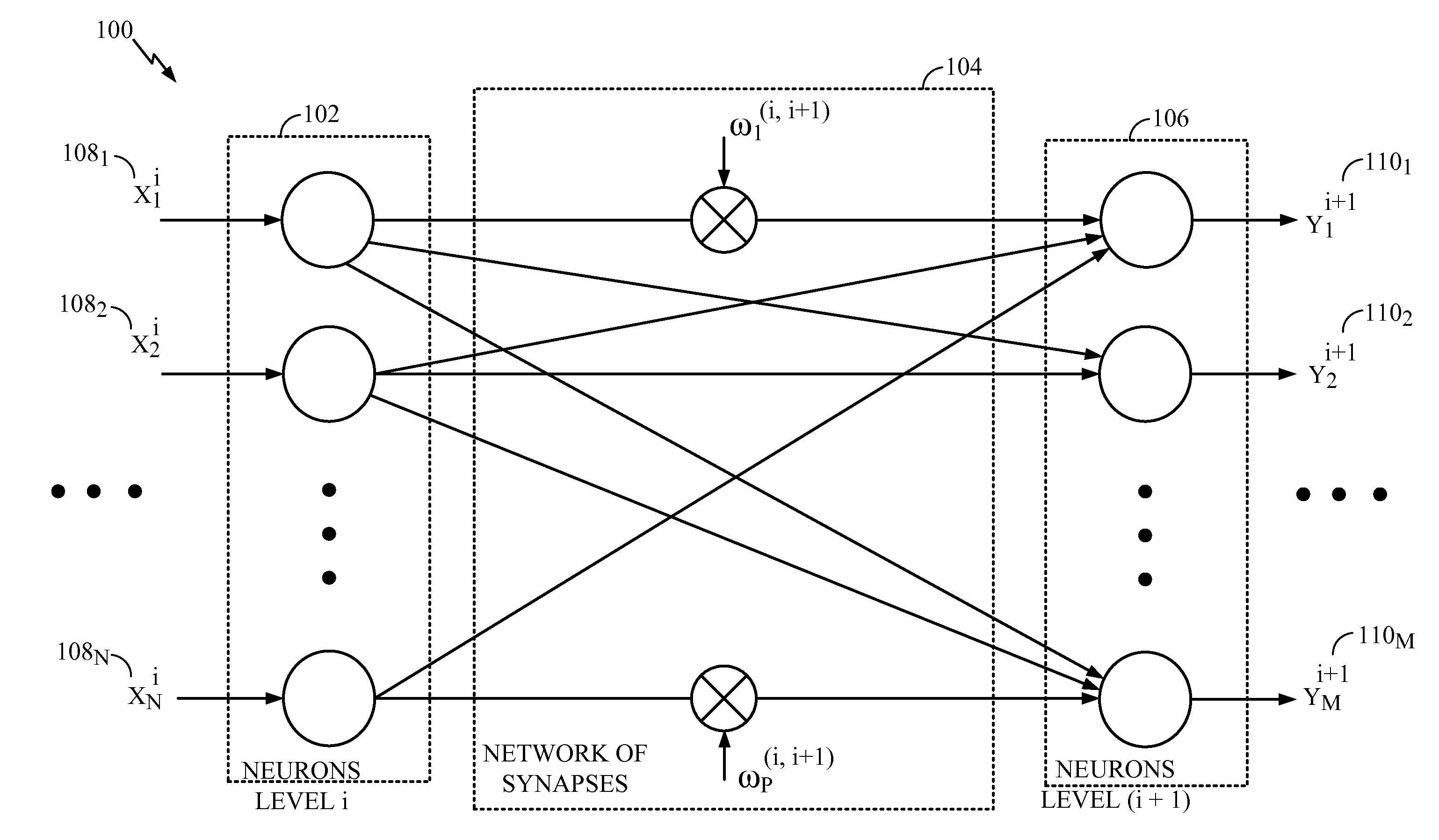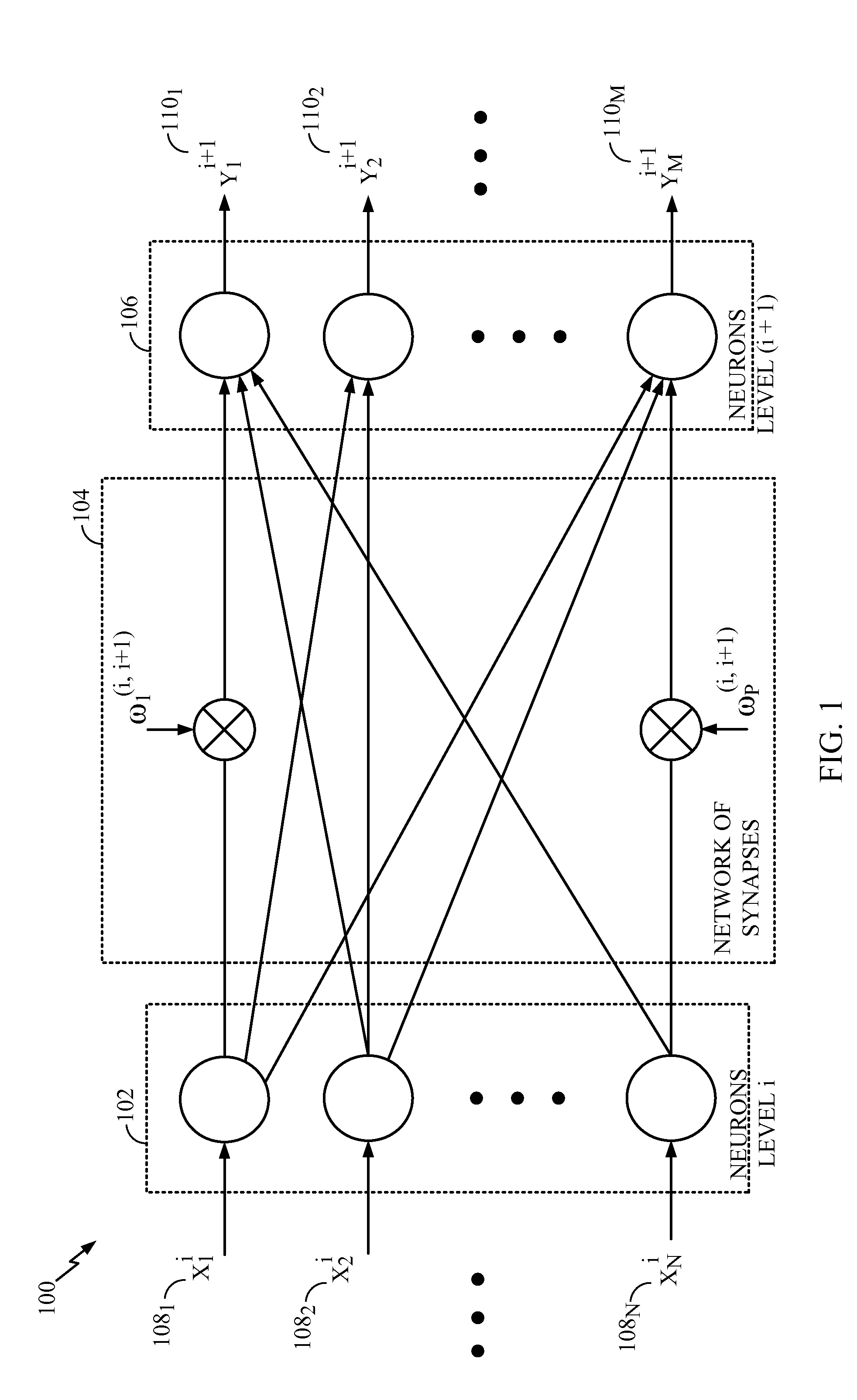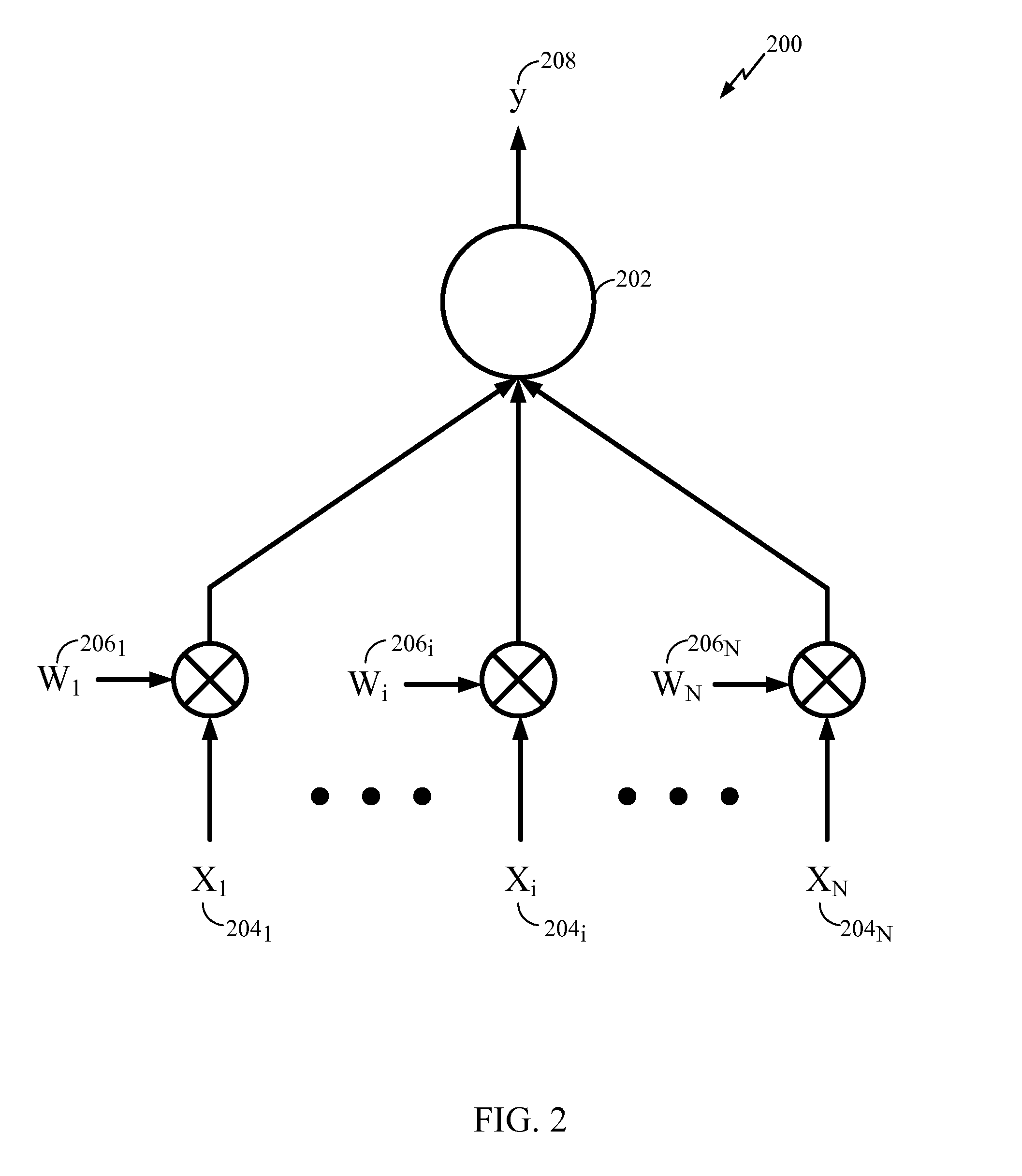Implementing delays between neurons in an artificial nervous system
a technology of artificial neurons and delays, applied in the field of artificial nervous systems, can solve the problems of cumbersome, inconvenient, or insufficient, and burdensome design of functions by conventional techniques, and achieve the effects of reducing the burden of conventional computational techniques, and improving the efficiency of computational methods
- Summary
- Abstract
- Description
- Claims
- Application Information
AI Technical Summary
Benefits of technology
Problems solved by technology
Method used
Image
Examples
example delay implementation
[0077]Spiking neural networks model spike transmission between artificial neurons (or neural processing units) using axonal and / or synaptic connections. The axon and synapse between the somas of any two connected artificial neurons may each have a delay associated therewith.
[0078]FIG. 5 conceptually illustrates such axonal and synaptic delays in an artificial nervous system, in accordance with certain aspects of the present disclosure. FIG. 5 illustrates a pre-synaptic artificial neuron A 501 and a pre-synaptic artificial neuron B 503 connected to a post-synaptic artificial neuron Y 505 via synapses 512 and 514, respectively. Neuron A comprises a soma 502 and an axon 508 having axonal delay dA, illustrated as a delay line. Similarly, neuron B has a soma 504 and an axon 510 having axonal delay dB, and neuron Y has a soma 506 and an axon 516 having axonal delay dY. Although delay lines are depicted in FIG. 5 to illustrate axonal delays, an actual implementation of an artificial nervou...
PUM
 Login to View More
Login to View More Abstract
Description
Claims
Application Information
 Login to View More
Login to View More - R&D
- Intellectual Property
- Life Sciences
- Materials
- Tech Scout
- Unparalleled Data Quality
- Higher Quality Content
- 60% Fewer Hallucinations
Browse by: Latest US Patents, China's latest patents, Technical Efficacy Thesaurus, Application Domain, Technology Topic, Popular Technical Reports.
© 2025 PatSnap. All rights reserved.Legal|Privacy policy|Modern Slavery Act Transparency Statement|Sitemap|About US| Contact US: help@patsnap.com



